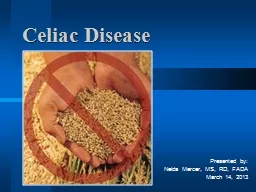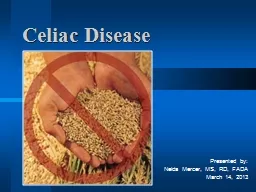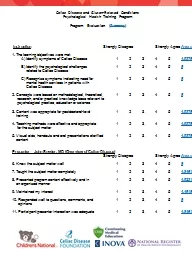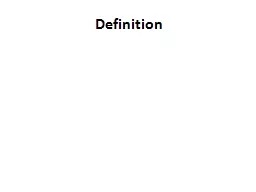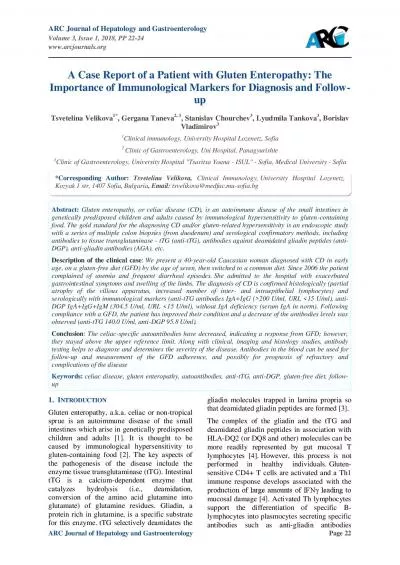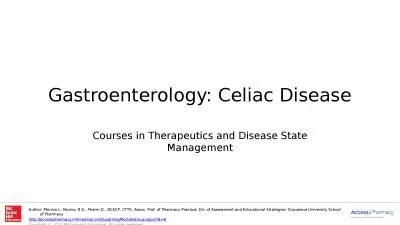PPT-Celiac Disease Presented by:
Author : giovanna-bartolotta | Published Date : 2019-12-12
Celiac Disease Presented by Nelda Mercer MS RD FADA March 14 2013 Celiac Disease Also known as Celiac Sprue Glutensensitive Enteropathy Nontropical Sprue How Common
Presentation Embed Code
Download Presentation
Download Presentation The PPT/PDF document "Celiac Disease Presented by:" is the property of its rightful owner. Permission is granted to download and print the materials on this website for personal, non-commercial use only, and to display it on your personal computer provided you do not modify the materials and that you retain all copyright notices contained in the materials. By downloading content from our website, you accept the terms of this agreement.
Celiac Disease Presented by:: Transcript
Download Rules Of Document
"Celiac Disease Presented by:"The content belongs to its owner. You may download and print it for personal use, without modification, and keep all copyright notices. By downloading, you agree to these terms.
Related Documents

